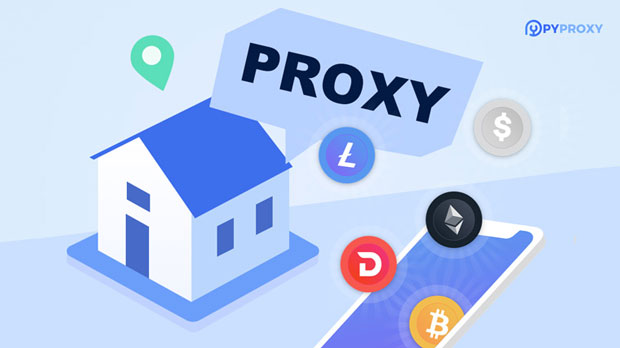A socks5 proxy server is a powerful tool that helps users enhance their privacy and security while browsing the internet. It acts as an intermediary between the user’s device and the internet, redirecting traffic through its own servers. Unlike regular proxies, SOCKS5 is designed to handle any kind of traffic, whether it’s web browsing, file sharing, or even gaming. By understanding its core functionalities and benefits, users can make more informed decisions when selecting a proxy service. This article will delve into the primary functions, advantages, and why sock s5 proxies are preferred by many for their versatility and security. What is a socks5 proxy server?SOCKS5 (Socket Secure version 5) is a protocol that facilitates the secure transmission of data between the user and the internet. It is designed to proxy network traffic without modifying or inspecting the data, making it highly versatile and effective for many applications. The SOCKS5 protocol differs from other proxy protocols, like HTTP and HTTPS, in its ability to handle various types of internet traffic, including FTP, P2P, and even VOIP, while offering enhanced security features.Main Functions of SOCKS5 Proxy Servers1. Traffic RedirectionOne of the key functions of a SOCKS5 proxy is traffic redirection. When you connect to the internet through a SOCKS5 proxy server, your connection is rerouted through the proxy. This ensures that your real IP address is hidden, replacing it with the IP of the proxy server. This functionality allows users to maintain privacy by masking their identity online.2. Unrestricted Access to ContentSOCKS5 proxies can bypass regional restrictions and censorship, providing access to content that may be blocked or restricted in certain countries. For example, streaming services like Netflix or Hulu may offer different content in different regions. With a SOCKS5 proxy, you can appear to be browsing from a different country and access content that is otherwise unavailable.3. No Data ModificationUnlike some proxies that modify or inspect the data passing through them, SOCKS5 proxies are designed to pass the data as-is, without any interference. This ensures that the data is not altered, which can be critical for users who need to transmit sensitive information or rely on data integrity.4. Support for Any ProtocolA major advantage of SOCKS5 over other proxy types is its ability to support any protocol. Whether it's HTTP, HTTPS, FTP, or P2P, a SOCKS5 proxy can handle all of these protocols, providing users with more flexibility. This is particularly useful for activities like torrenting or gaming, where other types of proxies may not be as effective.5. Enhanced Security with AuthenticationSOCKS5 proxies can be configured with authentication features, requiring users to input a username and password before they can access the server. This added layer of security helps prevent unauthorized access, ensuring that only legitimate users can connect through the proxy.Advantages of SOCKS5 Proxy Servers1. Privacy ProtectionThe primary advantage of using a SOCKS5 proxy is the increased level of privacy it offers. By masking your real IP address, a SOCKS5 proxy prevents websites and online services from tracking your online activities. This makes it harder for advertisers or hackers to collect personal information or monitor your behavior.2. Bypassing Geo-RestrictionsAnother key benefit of SOCKS5 proxies is the ability to bypass geographical restrictions. Users can connect to servers located in different parts of the world, making it possible to access region-specific content that may be blocked in their country. This is especially beneficial for streaming services, social media platforms, or accessing websites with geo-restricted content.3. Improved Security for Sensitive DataWhen using a SOCKS5 proxy, data is transmitted securely, ensuring that your browsing activities are not vulnerable to cyber threats. Since SOCKS5 does not modify the data, users can be confident that their data remains intact and free from third-party interference. This is particularly important when dealing with sensitive information such as login credentials, financial transactions, or personal communications.4. Increased Speed and PerformanceMany SOCKS5 proxy services are known for their speed and reliability. Since they do not inspect or alter the data, the connection remains fast and efficient. This is a crucial factor for users who rely on proxies for high-performance activities such as gaming, streaming, or torrenting.5. Versatility Across Various ApplicationsDue to its support for a wide range of protocols, SOCKS5 proxies are ideal for a variety of applications. Whether it’s for web browsing, file sharing, VoIP calls, or peer-to-peer (P2P) networking, a SOCKS5 proxy provides seamless support for all these functions. This versatility makes it a preferred choice for individuals and businesses alike.Why Choose SOCKS5 Over Other Proxies?1. More Secure than HTTP ProxiesWhile HTTP proxies are commonly used for web browsing, they have limitations in terms of privacy and security. They can only handle HTTP and HTTPS traffic, leaving other types of data unprotected. SOCKS5, on the other hand, can handle all kinds of traffic and does not interfere with the data passing through it, making it a more secure and flexible option.2. Better for Streaming and TorrentingFor activities like streaming and torrenting, SOCKS5 proxies offer better performance than traditional HTTP proxies. Since they can handle high-bandwidth applications and do not slow down your connection, they are ideal for uninterrupted streaming of videos or downloading large files through P2P networks.3. No Need for EncryptionUnlike VPNs, which encrypt data to provide privacy, SOCKS5 proxies do not provide encryption. While this may seem like a disadvantage, it actually contributes to the speed and efficiency of the connection. If privacy is the main concern, users can use additional encryption tools along with the SOCKS5 proxy for enhanced security without compromising on speed.SOCKS5 proxy servers offer an exceptional combination of privacy, security, and versatility. By masking your real IP address and allowing you to bypass geo-restrictions, they enhance both your online privacy and access to content. Their ability to handle any type of internet traffic, along with their support for authentication and improved security features, makes SOCKS5 proxies a top choice for anyone looking to secure their internet activities. Whether you are a casual user looking for privacy or someone who needs robust proxy support for streaming, torrenting, or gaming, SOCKS5 is an ideal solution.
Oct 12, 2025



































































